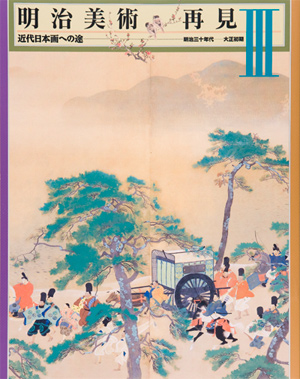| image | information |
|---|---|
 |
This exhibition is the third of a series called “Reappraisal of Meiji Art” in which we systematically introduce the Meiji art housed in the Museum of Imperial Collections (Sannomaru Shozokan). In the first exhibition of this series, we displayed our oil paintings, metalworks and sculptures, and cloisonne works, in the second exhibition we displayed our Japanese paintings of the late 1880's to 1890's, which eventually are to be called “Nihonga”. In this exhibition in succession of the second exhibition, we are focusing on our various Nihonga of the late 1890's to middle 1910's. The late 1890's to early 1900's are considered generally to be the era of establishment of modern Nihonga with expression related to painting expression today, when the lively radical activity of the Nihon Bijutsuin painters connected to Tokyo Bijutsu Gakko (Tokyo Art School) such as Shimomura Kanzan and Hashimoto Gaho 1ead by Okakura TenShin, took place against the conservative Nihon Bijutsu Kyokai painters who retained their traditional stance eventually to decline. The development of Nihonga since then has been placed within the two main currents, namely that of Nihon Bijutsuin and that of the governmental exhibition established in 1907, and the activity of the Nihon Bijutsu Kyokai painters has rarely been focused upon. Within the evolution theory-like Japanese modern art history view, the progressive power of Nihon Bijutsuin called the “new school” was positively evaluated as the main source current of modern and contemporary art, and compared with the governmental exhibitions such as the Monbusho Bijutsu Tenrankai (Ministry of Education Art Exhibition) establishment power. Within Modern Nihonga history, Nihon Bijustu Kyokai was considered as a reactive subsidiary line left behind the times, following traditional styles, insensitive towards the trends of the times. However, closely observing the actual paintings today, the Nihon Bijutsu Kyokai painters who have been scorned as the “old school”, also attempted to progress their own styles within the new trends of the era. The themes of their paintings were often traditional such as historical people, historical manners and customs, or ancient court and military practices, but there was a general trend of brightening in color schemes and a change to refined, modernized forms full of the sense of the new era. This was a style different from the works of the Nihon Bijutsuin school painters using mοkkotsu (boneless) technique, but considering that it was a transition according to the change of the era, it was the same movement as the new currents represented by the Nihon Bijutsuin. Nanga (southern style paintings) also showed new compositions clearly reflecting the new sense of the era, which is a point which should be noted. This exhibition mainly introduces the works of Nihon Bijutsu Kyokai painters from this point of view, and also works of the same era, of the radical school such as Shimomura Kanzan and Hashimoto Gaho, and of the eclectic school such as Kawabata Gyokusho and other painters. By exhibiting the 37 pieces of our collection, which are in various forms such as hanging scrolls, framed paintings, hand scrolls, and albums, we attempt to explore again the characteristics of modern Nihonga of late Meiji period to early Taisho period, and reevaluate the activity of the Nihon Bijutsu Kyokai painters. Furthermore, along with these, we will exhibit the work by the Teishitsu Gigei-in (Court Artists) Hashimoto Gaho and Kawabata Gyokusho made for the 1900 Paris International Exhibition, which will be shown in public for the first time. |